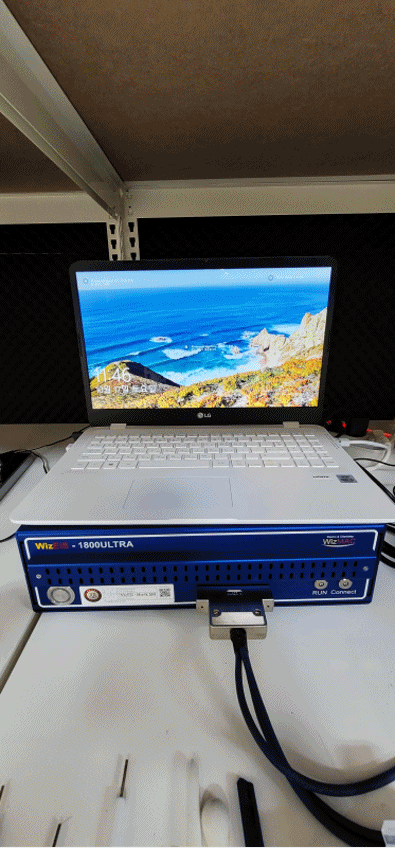Click for more images: Potentiostat

A potentiostat is the electronic hardware required to control a three electrode cell and run most electroanalytical experiments. A Bi-potentiostat and polypotentiostat are potentiostats capable of controlling two working electrodes and more than two working electrodes, respectively.
The system functions by maintaining the potential of the working electrode at a constant level with respect to the reference electrode by adjusting the current at an auxiliary electrode. It consists of an electric circuit which is usually described in terms of simple op amps.
This equipment is fundamental to modern electrochemical studies using three electrode systems for investigations of reaction mechanisms related to redox chemistry and other chemical phenomena. The dimensions of the resulting data depend on the experiment. In voltammetry, electric current in amps is plotted against electric potential in voltage. In a bulk electrolysis total coulombs passed (total electric charge) is plotted against time in seconds even though the experiment measures electric current (amperes) over time. This is done to show that the experiment is approaching an expected number of coulombs.
(Source: Wikipedia)
A galvanostat (also known as amperostat) is a control and measuring device capable of keeping the current through an electrolytic cell in coulometric titrations constant, disregarding changes in the load itself. Its main feature is its nearly “infinite” (i.e. extremely high in respect to common loads) internal resistance.
The designation “galvanostat” is mainly used in electrochemistry: this device differs from common constant current sources by its ability to supply and measure a wide range of currents (from picoamperes to amperes) of both polarities.
(Source: Wikipedia)
Electrochemical Impedance Spectroscopy
Dielectric spectroscopy (which falls in a subcategory of impedance spectroscopy) measures the dielectric properties of a medium as a function of frequency. It is based on the interaction of an external field with the electric dipole moment of the sample, often expressed by permittivity.
It is also an experimental method of characterizing electrochemical systems. This technique measures the impedance of a system over a range of frequencies, and therefore the frequency response of the system, including the energy storage and dissipation properties, is revealed. Often, data obtained by electrochemical impedance spectroscopy (EIS) is expressed graphically in a Bode plot or a Nyquist plot.
(Source: Wikipedia)
Click for more images: Potentiostat
